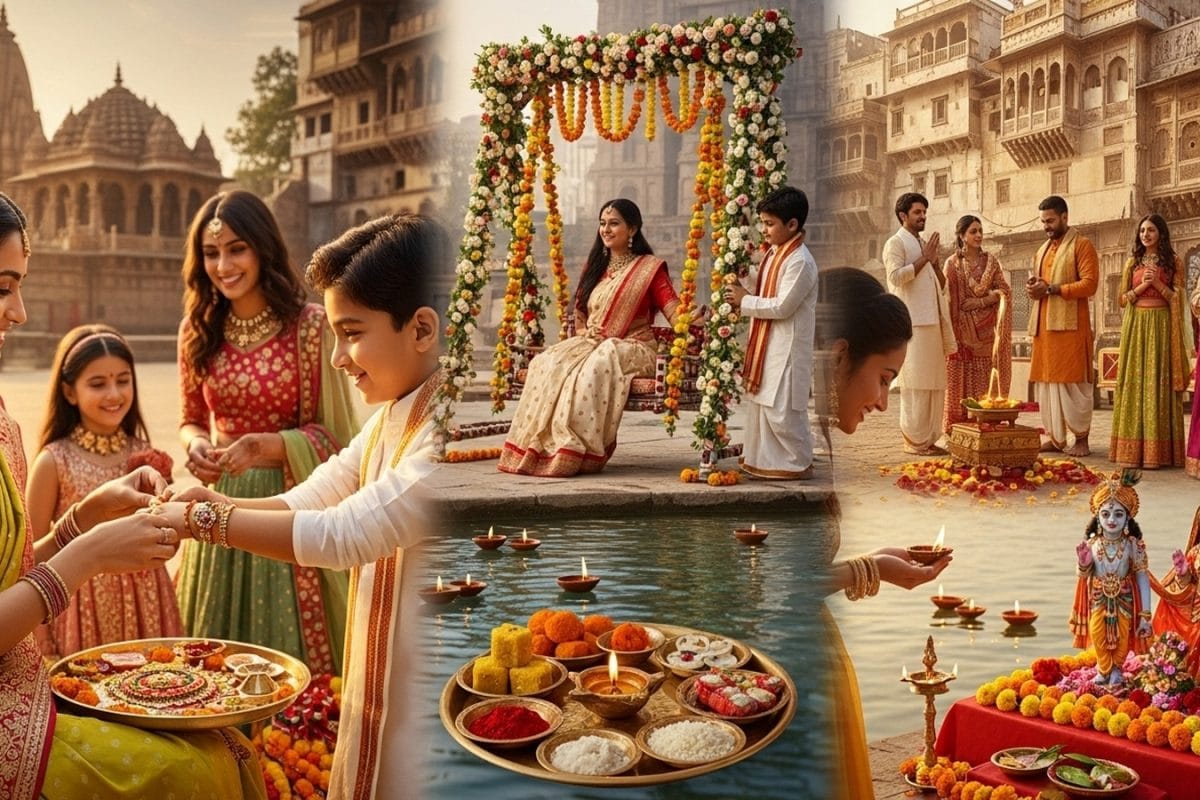Discover the Art of Indian Textile Weaving: 6 Unique Fabrics. Dive into the rich heritage and craftsmanship behind each fabric
India, a land of vibrant colours and diverse cultures, boasts a textile heritage
as rich and intricate as its history. For centuries, skilled artisans have woven magic into fabrics, creating masterpieces that are not just garments but also stories etched in thread.
From the snow-capped Himalayas to the sun-kissed beaches of the South, each region has developed its own unique weaving style, reflecting its environment, beliefs, and artistic sensibilities.
Let's take a journey through six extraordinary Indian fabrics that showcase the country's unparalleled textile legacy, celebrating the artistry and dedication of the weavers who keep these traditions alive.
These fabrics represent not only the craftsmanship but also the cultural identity of communities across India. Understanding them opens a window into the soul of the nation.
Ethereal Chikankari embroidery from Lucknow, known for elegance and intricate white-on-white designs
First on our list is the ethereal Chikankari from Lucknow, Uttar Pradesh. This delicate embroidery, traditionally done on fine muslin cloth, features intricate white-on-white threadwork.
The designs often depict floral and paisley motifs, meticulously hand-stitched to create a subtle yet mesmerizing texture. The process involves blocking on the fabric with wooden blocks, the embroiderer then stitches over the block printed designs giving a raised texture.
The fabric is then washed to remove the block prints. Chikankari is known for its elegance and sophistication and is a classic choice for sarees, kurtis, and other traditional attire. Embraced by royalty and commoners alike, Chikankari has transcended time, retaining its charm and appeal.
Each motif carries a story of nature, reflecting the surroundings and the artisans' deep connection with their environment. These fabrics are light to wear, making them ideal for warm weather.
Discover the exquisite art of Patola silk weaving in Gujarat with intricate patterns and vibrant colors
Next, we traverse to the vibrant state of Gujarat, home to the exquisite Patola silk. These double ikat sarees, woven with painstaking precision, are renowned for their geometric patterns and vibrant colours.
The resist-dyeing technique used in Patola weaving is incredibly complex, requiring exceptional skill and patience. Before the weaving process even begins, both the warp and weft threads are carefully tie-dyed according to a pre-determined design.
This ensures that when the fabric is finally woven, the intricate patterns emerge perfectly. Known for their durability and enduring beauty, Patola sarees are treasured heirlooms, passed down through generations. Each saree takes months to create and reflects the dedication of the weaver.
Patola is a symbol of fine craftsmanship, with each region in Gujarat having its own variations and motifs, contributing to the diversity of this art form. The colours are derived from natural sources.
Exploring Rajasthan's Bandhani fabric: intricate tie-dye patterns with cultural significance
Our journey then takes us to the state of Rajasthan, where we encounter the colourful Bandhani fabric. This tie-dye textile, also known as Bandhej, is created by tying thousands of tiny knots on a fabric before dyeing it.
The resulting patterns are intricate and geometric, often featuring dots, squares and stripes. Bandhani patterns often represent local beliefs and customs, with each colour and motif carrying a hidden meaning.
The tradition of Bandhani is deeply rooted in the culture of Rajasthan and Gujarat, with families passing down the art form through generations. The process requires incredible dexterity and precision, as even a slight error can ruin the final design.
Lightweight and airy, Bandhani fabrics are perfect for summer wear. Different regions have their unique ways of tie dyeing. They are popular during festive seasons.
Muga silk from Assam: prized for golden hue and durability
From the arid landscapes of Rajasthan, we move to the lush green hills of Assam, the land of Muga silk. This golden silk, produced by the Muga silkworm, is unique to Assam and is prized for its natural luster and durability.
Muga silk is known for its rich golden hue, which intensifies with each wash. The rearing of Muga silkworms is a delicate process, requiring specific environmental conditions and careful feeding. The weaving of Muga silk is also a meticulous craft, often done on traditional looms.
Muga silk sarees and mekhela chadors (traditional Assamese attire) are symbols of status and prestige, worn on special occasions. The unique golden colour, combined with its incredible durability, makes it a valuable and sought-after textile.
This fabric is not just a piece of garment; it represents the culture and tradition of the Assamese people. The silk is totally organic because the silkworms feed on special leaves.
Exploring the opulence of Kanjeevaram silk sarees in Tamil Nadu
Now, let's travel down south to Tamil Nadu to explore the magnificent Kanjeevaram silk sarees. Known for their rich colours, intricate zari work (gold thread embroidery) and heavy silk fabric, these sarees are often worn for weddings and other important ceremonies.
Kanjeevaram sarees are made from pure mulberry silk and are characterized by their contrasting borders and pallus (the decorative end piece of the saree). The zari work is done using pure gold or silver threads, adding to the saree's opulence and grandeur.
Kanjeevaram sarees are a testament to the skill and artistry of the weavers of Kanchipuram, who have perfected this craft over centuries. These sarees are not just garments but also works of art, reflecting the rich cultural heritage of Tamil Nadu.
Every saree is unique and the price of saree depends on the amount of zari work done. The designs are inspired by temples and ancient scriptures.
Art of Kalamkari in Andhra Pradesh: intricate fabric with natural dyes reflects rich heritage
Finally, we find ourselves in the state of Andhra Pradesh, gazing upon the Kalamkari fabric. This intricate textile art involves hand-painting or block-printing designs onto cotton or silk fabric using natural dyes.
Kalamkari, meaning "pen craft," is traditionally used to depict scenes from Hindu mythology and folklore. The process is intricate and time-consuming, requiring multiple stages of dyeing, washing, and painting.
The natural dyes used in Kalamkari are derived from plants, minerals, and other natural sources, giving the fabric its unique earthy tones. Kalamkari fabrics are used to create sarees, wall hangings, and other decorative items.
The art of Kalamkari is a living tradition, passed down through generations of artisans. Each design carries a story, reflecting the rich cultural heritage of Andhra Pradesh. Kalamkari is a sustainable form of art as it makes use of natural dyes.
AI Generated Content. Glance/InMobi shall have no liability for the content









